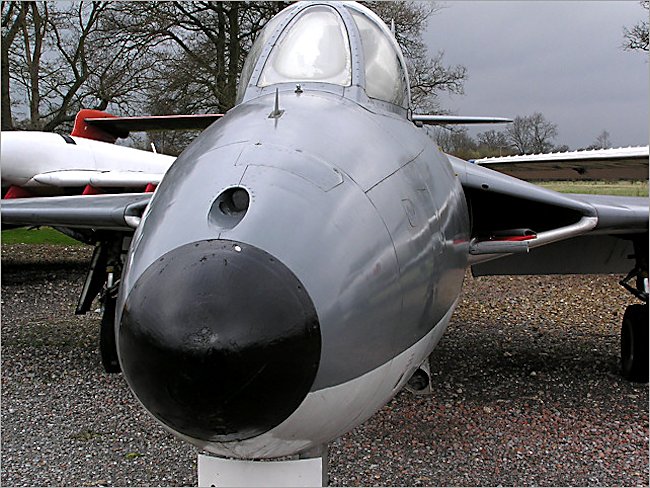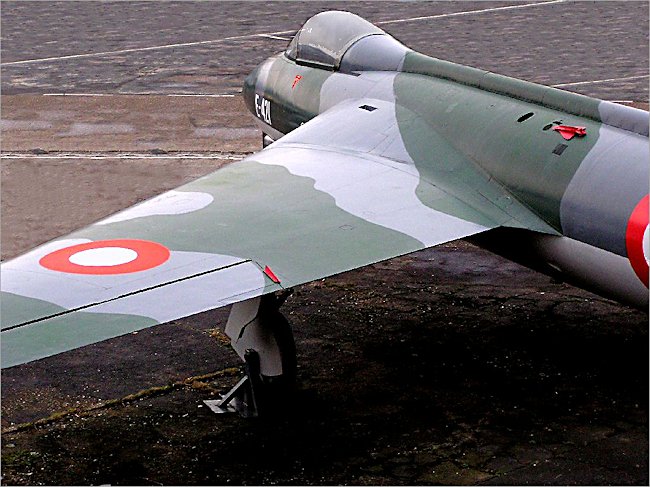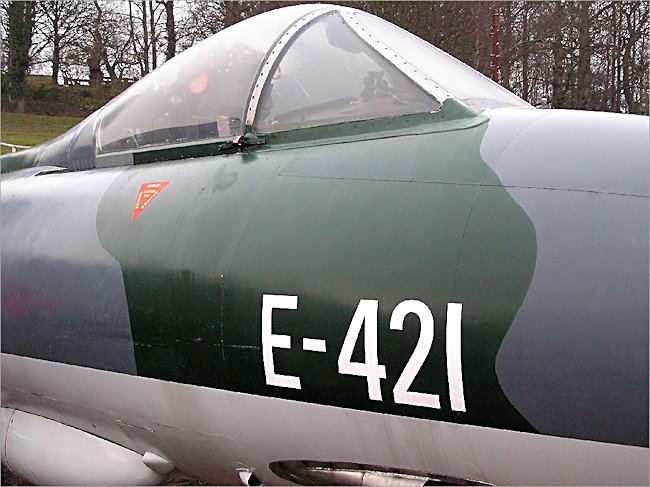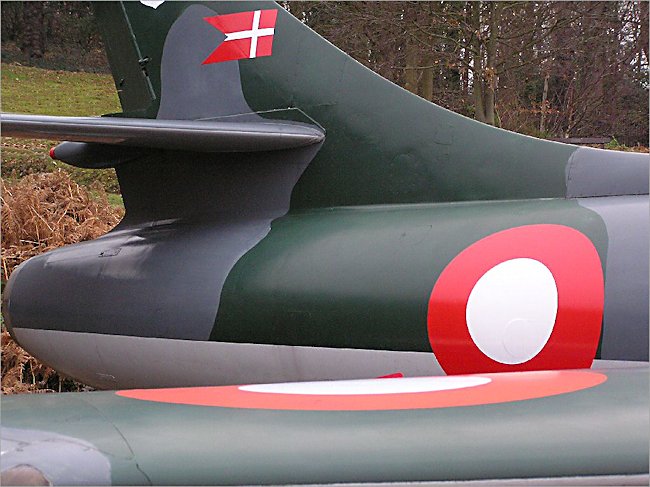Hawker Hunter Jet Fighter Bomber
The above photograph is of a Hawker Hunter in Danish Airforce livery. The Hawker Hunter is said to be the most successful of the British postwar fighters, and a very capable airplane. During its life, the airplane was continually modified and improved, resulting in over 25 variants, including export versions for over 22 foreign nations. All versions were supersonic, and most variants featured increases in armament, power and fuel quantity. It was designed by Sir Sydney Camm, designer of the Hawker Hurricane and Sea Hawk. The Hawker Hunter replaced the Sabres, Vampires and Venoms of Fighter Command and RAF Germany
The prototype was first flown on 20 July 1951. The first production Hawker Hunter F1 flew on the 16th of May, 1953, but this and a further 22 early production aircraft were used for development purposes. The single-seat Hawker Hunter F1 entered service with the Royal Air Force in July 1954 with 43 Squadron

A two-seat variant, the Hawker Hunter T7, entered service in 1958. Deliveries of the Hunter continued until 1966. Major variants included the Hawker Hunter F4 with the Avon Mk 115 engine. The F.4 had more fuel and strengthened wings, enabling carriage of various air to ground stores including bombs and rockets. The Hawker Hunter F5 had a Sapphire Mk 101 engine. The F.5 was the first variant to see active service, being deployed against ground targets in Egypt during the Suez campaign. None were lost on missions but two were destroyed on the ground at Cyprus by EOKA terrorists.

The Hawker Hunter F6 was issued with anAvon Mk 203 engine and increased fuel capacity. F.6s could scramble more quickly and intercept the enemy as they used an AVPIN starter system, enabling quicker engine spool-up than the cartridge-started early variants. With better performance at altitude, the Hunter was now able to hold its own with most of its contemporaries and could intercept bombers such as the B-45 and Canberra. By the late 1950s the V-bombers were entering service and these could climb above a Hunter's reach.

The Hawker Hunter T8 was the two-seat Navy version. The Hawker Hunter FR10 was the RAF reconnaissance version used largely in RAF Germany. The Hawker Hunter GA11was the Royal Navy single-seat attack version. The Hawker Hunter FGA9 had greater weapons capacity, increased thrust and strengthened fuselage for its ground-attack role.
The Hawker Hunter was one of the UK's greatest defence export successes with no less than 19 countries operating the Hunter. The Indian Airforce Hawker Hunter performed well as a ground attack fighter bomber against Pakistani tanks in the 1965 and 1971 conflicts. There was a different story when they came up against US built Saber jets armed with the new sidewinder air to air missiles operated by the Pakistani Airforce. Indian Airforce Hawker Hunter air defence jet fighters rather than ground attack configured Hunter, could out perform the F-104 Sabers at high altitude. The Pakistani Airforce Saber pilots wisely tried to dragged Hawker Hunters into low level, low speed dog fights, where the Hunter's performance was more comparable to the Sabre. Many Foreign Airforces eventually replaced Hunters with F4 phantoms. Hawker Hunters were still being flown in the 1990s were still in service mainly with the Swiss Air Force, RAF and Royal Navy, but as of 1998, only Zimbabwe's Hunters are still in front-line service. At least 30 are still airworthy in private hands.

The fully supersonic missile armed English Electric Lightning replaced the Hawker Hunters and Javelin jet fighter interceptors in the UK and Germany. Hunters were not up to the job of scrambling to very high altitude and shooting down the new breed of Soviet Warsaw Pact high altitude bombers.
Hawker Hunter books


Tweet